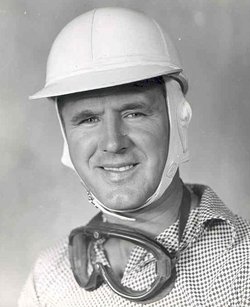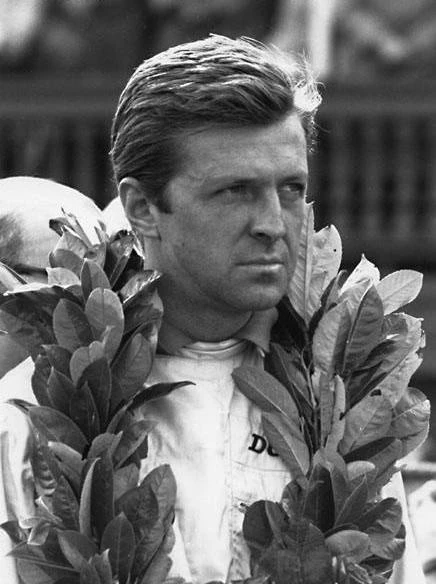May 25, 1923 – May 9, 2001
Henry "Smokey" Yunick
(Photo; www.smokeyyunick.com)
Born in Neshaminy, Pennsylvania, USA.
Yunick was deeply involved in the early years of NASCAR, and he is probably most associated with that racing genre. He participated as a racer, designer, and held other jobs related to the sport, but was best known as a mechanic, builder, and crew chief. Between 1958 and 1973, Yunick also participated in Indianapolis 500 racing, his car winning the 1960 race. Yunick also built a 1968 Camaro for Trans-Am racing.
Yunick was twice NASCAR mechanic of the year; and his teams would include 50 of the most famous drivers in the sport, winning 57 NASCAR Cup Series races, including two championships in 1951 and 1953.
He was renowned as an opinionated character who "was about as good as there ever was on engines", according to Marvin Panch, who drove stock cars for Yunick and won the 1961 Daytona 500. His trademark white uniform and battered cowboy hat, together with a cigar or corncob pipe, were a familiar sight in the pits of almost every NASCAR or Indianapolis 500 race for over twenty years. During the 1980s, he wrote a technical column, "Track Tech", for Circle Track magazine.
He was inducted in the International Motorsports Hall of Fame in 1990 and the Motorsports Hall of Fame of America in 2000. Yunick is a member of over 30 Halls of Fame across the United States and the rest of the world. Some of his personal items, including hats, pipes, boots, engines, etc. are on display at museums from race tracks to the Smithsonian.
Yunick died from Leukemia on May 9, 2001 at the age of 77, in Daytona Beach, Florida.
For more; Tribute To "Smokey" Yunick
Henry "Smokey" Yunick
(Photo; www.smokeyyunick.com)
Born in Neshaminy, Pennsylvania, USA.
Yunick was deeply involved in the early years of NASCAR, and he is probably most associated with that racing genre. He participated as a racer, designer, and held other jobs related to the sport, but was best known as a mechanic, builder, and crew chief. Between 1958 and 1973, Yunick also participated in Indianapolis 500 racing, his car winning the 1960 race. Yunick also built a 1968 Camaro for Trans-Am racing.
Yunick was twice NASCAR mechanic of the year; and his teams would include 50 of the most famous drivers in the sport, winning 57 NASCAR Cup Series races, including two championships in 1951 and 1953.
He was renowned as an opinionated character who "was about as good as there ever was on engines", according to Marvin Panch, who drove stock cars for Yunick and won the 1961 Daytona 500. His trademark white uniform and battered cowboy hat, together with a cigar or corncob pipe, were a familiar sight in the pits of almost every NASCAR or Indianapolis 500 race for over twenty years. During the 1980s, he wrote a technical column, "Track Tech", for Circle Track magazine.
He was inducted in the International Motorsports Hall of Fame in 1990 and the Motorsports Hall of Fame of America in 2000. Yunick is a member of over 30 Halls of Fame across the United States and the rest of the world. Some of his personal items, including hats, pipes, boots, engines, etc. are on display at museums from race tracks to the Smithsonian.
Yunick died from Leukemia on May 9, 2001 at the age of 77, in Daytona Beach, Florida.
For more; Tribute To "Smokey" Yunick















